The construction bidding process is long, complex, and often as expensive as it is time-consuming.
Estimators pour hours into deciphering plans, handpicking the perfect subcontractor lists, and chasing down quotes from subs.
Meanwhile, subcontractors face even bleaker odds — investing time in bids with just a 10% win rate, which means nine times out of ten, their effort doesn’t pay off.
But Artificial Intelligence tools are reshaping this inefficient process. Smart algorithms now speed through tasks that once took days, helping both GCs and subs work smarter.
In this guide, we’ll show exactly how construction companies can cut bid prep time and boost win rates with AI-powered solutions.
Note: Let AI handle your tedious preconstruction tasks. Downtobid identifies scopes, finds qualified local subs, and sends personalized bid invites to potential subs. Speed up your preconstruction tasks. Try a free demo today.
Key Takeaways
- AI reshapes construction bidding by speeding tasks that took days, helping GCs and subs work smarter.
- Downtobid's AI identifies scopes, finds qualified subcontractors, sends personalized invites for complete workflow.
- AI achieves 100% scope coverage by scanning plans, organizing sheets, extracting callouts, creating summaries.
- Increases bid participation through verified networks, optimized ITBs, bidding intent analysis, easy document access.
- Results: 30% average response increase, some users achieve 60% response rates and 80+ bids per project.
The Role of AI in Construction Bidding
Construction lives on tight deadlines. GCs and estimators often have just 2–3 weeks to get bids out once documents land on their desks, leaving no room for mistakes. Even seasoned pros face slip-ups—small missteps that can lead to delays, change orders, and cost overruns.
If you take extra time on a project plan, subs may feel the crunch on their end, leading them to pad their bids as safety nets or skip bidding entirely. It’s a relentless, unforgiving cycle, but AI is breaking it down.
For instance, you can use AI to read through construction plans. There are also estimating software like Mbue, Kreo, Togal, and Civils help teams speed through takeoffs and cost estimates. . AutogenAI uses natural language processing and machine learning to draft high-quality proposals faster and more productively. Hypotenuse.AI also helps with AI-powered content generation for construction documentation, marketing, and reports.
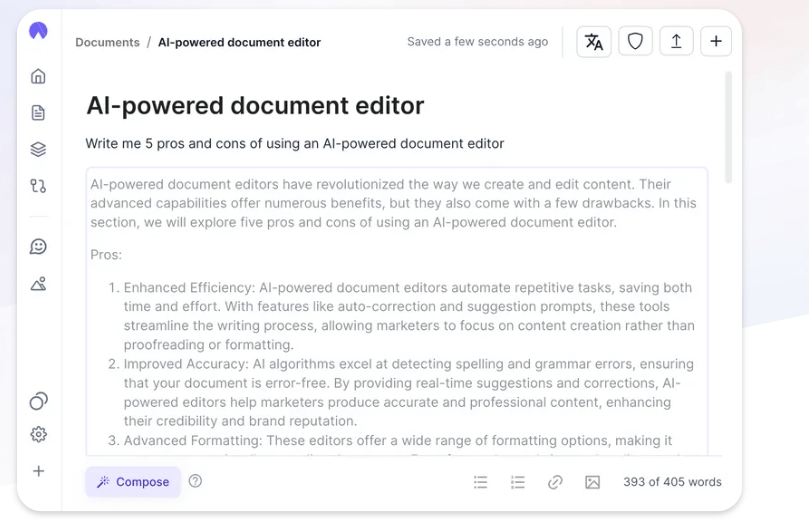
You can see our full AI construction tools review here.
That said, construction bidding needs more than single-task solutions. After talking with hundreds of estimators and GCs, we built Downtobid to address their complete bidding workflow.
Downtobid is an AI-powered construction bid management platform that automatically identifies scopes of work, finds qualified local commercial subcontractors, and sends personalized bid invites. Our platform tackles the full scope of bidding challenges, and we'll explain in detail below.
How AI is Easing Bidding Challenges
For most GCs, successful bidding really boils down to two key goals:
- Getting 100% scope coverage
- Increasing subcontractor participation, boosting bid coverage, and winning bids.
Here’s how these innovative AI construction companies are hitting these targets:
Getting 100% Scope Coverage
Construction projects are a juggling act of complex plans and detailed project requirements. These documents often run hundreds — sometimes thousands — of pages long, burying crucial details in layers of standard content.
Take, for instance, this 474-page PDF for a wellness center project.
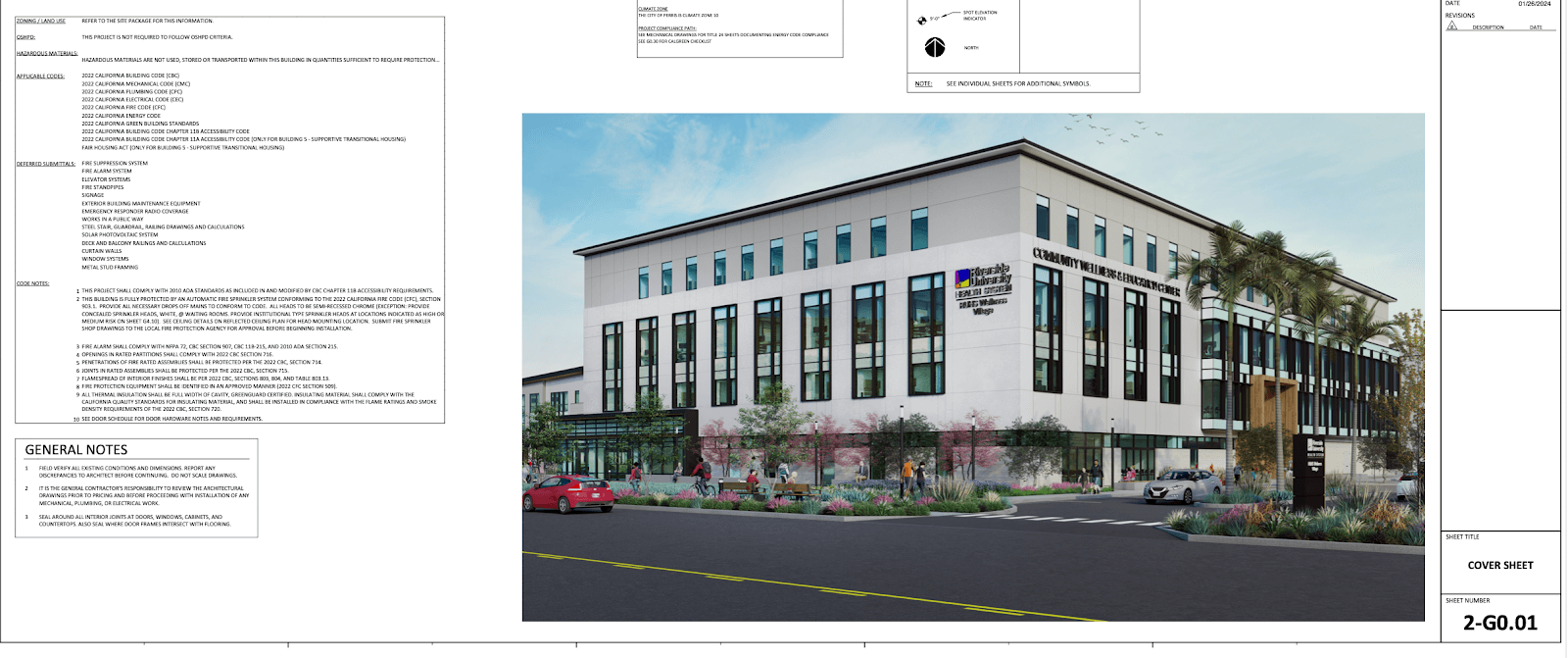
By construction industry standards, it’s a medium-sized project, yet it’s loaded with information. Every page holds something valuable — like materials, walls to add, lighting, and other project specifications — but these key details can be hard to find.
AI tackles specification reading by turning it from a tedious grind into an accurate, streamlined workflow. It pulls the critical info to the surface, cutting through the filler. It:
- Scans and organizes each plan sheet into a searchable database, so you can quickly find what you need and save time.
- Pulls out construction callouts, notes, and schedules, linking them back to their original pages for easy verification.
- Creates concise scope summaries from hundreds of pages, ready for fast, reliable review.
It sounds promising, but how does it work in practice?
Identifying Bid Packages with Downtobid
Let’s look at a real example with Downtobid’s analysis of an Air Force renovation project (see our full demo video here.)

The AI identifies specific tasks, like demolishing walls, removing lighting, and clearing mechanical ductwork. It even highlights plan sheets like AD-101 to show exactly where it pulled this information.
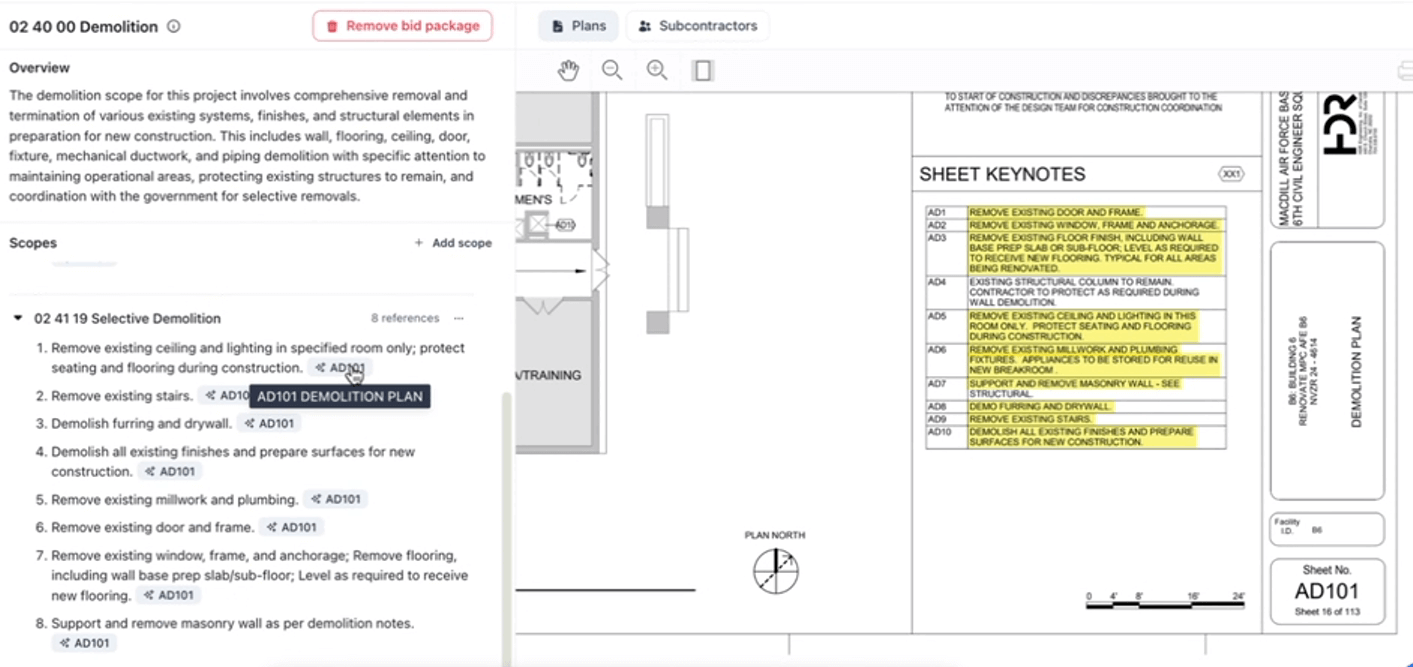
Clicking on an item (e.g., "remove existing ceiling and lighting") takes you directly to the relevant section of the plans.

This setup lets you start with AI’s precise summary, then dig deeper as needed. It shaves hours off traditional scope review and reduces the risk of missing important details.
But we’re just beginning to unlock AI’s potential here. Our long-term goal is to develop AI that genuinely “understands” construction plans. As construction drawings AI gets smarter, it’ll handle more workflows. For instance, we’re starting to add annotations to plans so language models can better interpret blueprint structures:
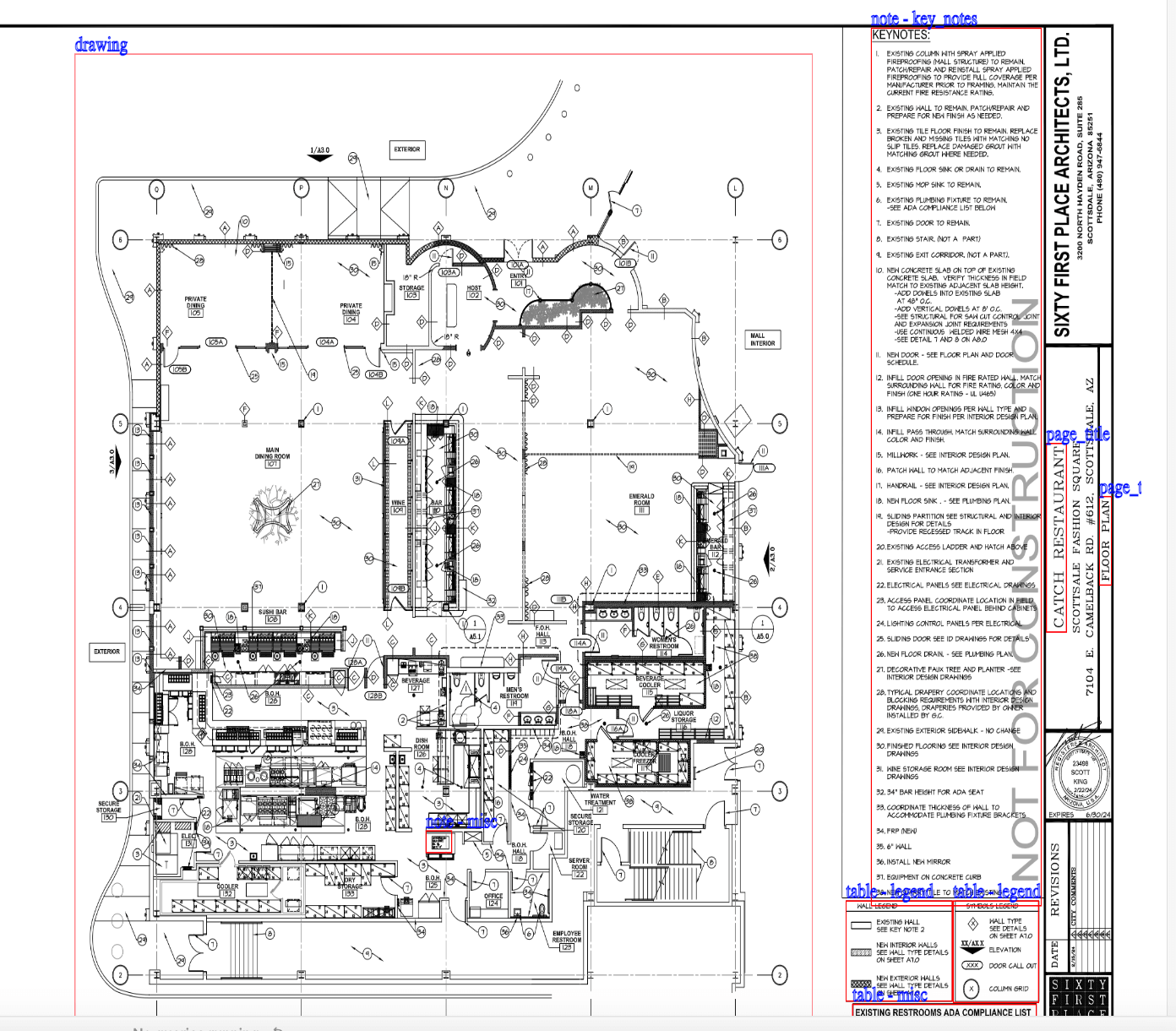
Increasing Bid Participation and Bid Coverage
Identifying scopes is a critical first step, but it’s only half the job. Getting the right subcontractors to engage in the bid process is just as important. More bids from qualified subs mean:
A clearer picture of project costs
Competitive pricing
Reduced quality and timeline risks, meaning easier project management
In an ideal world, you’d always have perfect bid coverage. But in reality, factors like project location, work type, and subcontractor availability create challenges.
To tackle this, many contractors default to casting a wide net — inviting everyone in hopes someone bites. It’s a flawed strategy driven by the fear of missing out on opportunities others might seize.
Subcontractors are already swamped with RFI documents, payments, schedules, and safety concerns. Add a disorganized, unclear bid invite to the mix, and you’ve already lost their attention.
Instead, real success hinges on a targeted approach — matching each project with subcontractors who have the skills, experience, and availability to bid accurately.
Here’s how AI and construction technology can improve bid coverage and increase participation:
Getting Access to the Right Subcontractors
For accurate scope alignment, you need the right subcontractors in your network to start.
Yet, many traditional construction management platforms fall short because they rely on subs to update their own profiles — a task that often slips down the priority list. Here’s what this means in practice:
- Missing or wrong contact details lead to dead-ends.
- Key info, like union status, MWBE certifications, or project history, gets overlooked.
- Regional listings are outdated, showing subs who no longer operate in certain areas.
- Retired employees still show up in the system
- Trades not properly mapped to CSI Codes, making it hard to find the right subs for specific jobs.
The Downtobid subcontractor network tackles this challenge with AI and proactive verification:
- Analyze subcontractor portfolios to identify project and location preferences.
- Use a self-cleaning AI database to remove inactive users and outdated profiles.
- Verify subcontractor activity through direct outreach.
- Categorize trades with AI, aligning services to actual needs.
- Cross-check data with Google Maps and local trade associations for accuracy.
- Update contact details with every interaction for a consistently fresh database.
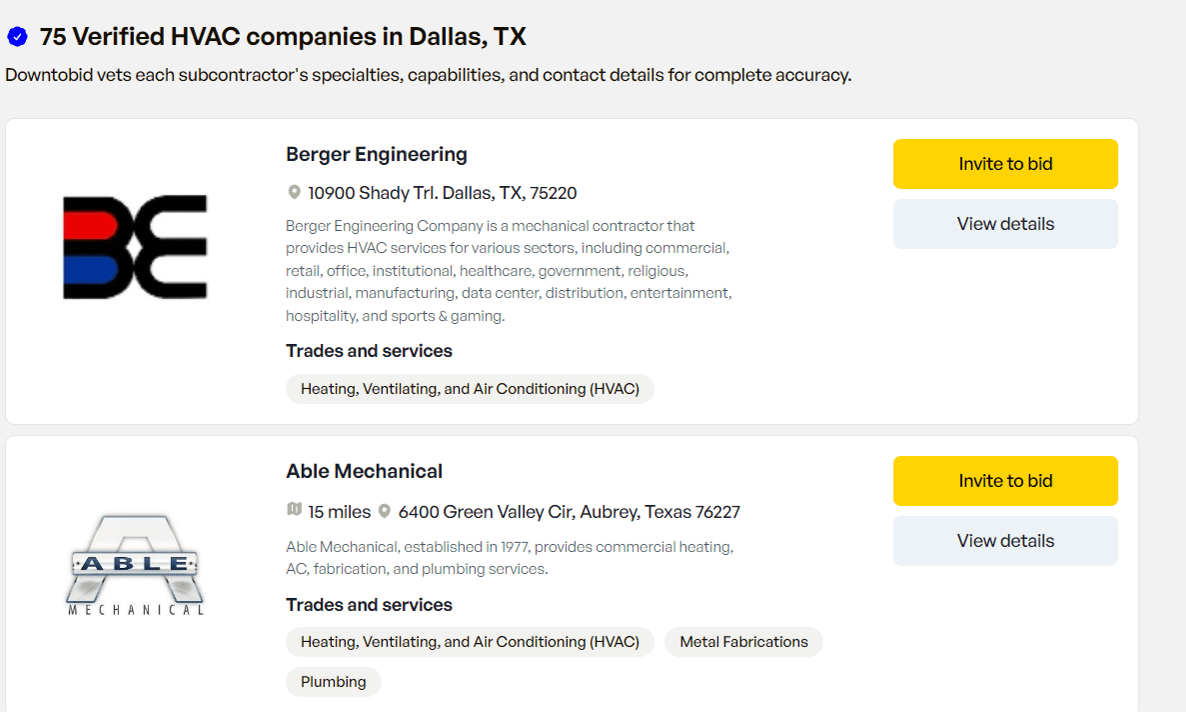
For more insights into how we verify subcontractors, read our review of the Building Connected vs. Downtobid subcontractor network here.
Optimizing Invitations to Bid (ITBs)
Through our extensive research analyzing public and private data — including 60,000 historical subcontractor bids and a national subcontractor database— we’ve identified three key factors that influence subcontractors to respond positively to an ITB:
- Familiar, trusted GCs receive faster responses.
- Jobs within 150 miles of a sub’s location are more appealing.
- Clearly aligned projects with the sub’s expertise drive higher engagement.
While you can't always control brand recognition or proximity to subs, you can control how your ITBs highlight these key factors. Here's how Downtobid's AI makes crafting compelling ITBs easy:
- AI pinpoints specific skills and experience that make each subcontractor ideal for the project.
- A well-defined scope of work upfront saves subcontractors from digging through excessive documents.
- Key project details like size, type, and location grab attention immediately.
- Timely AI-driven reminders keep opportunities top-of-mind and demonstrate genuine interest.
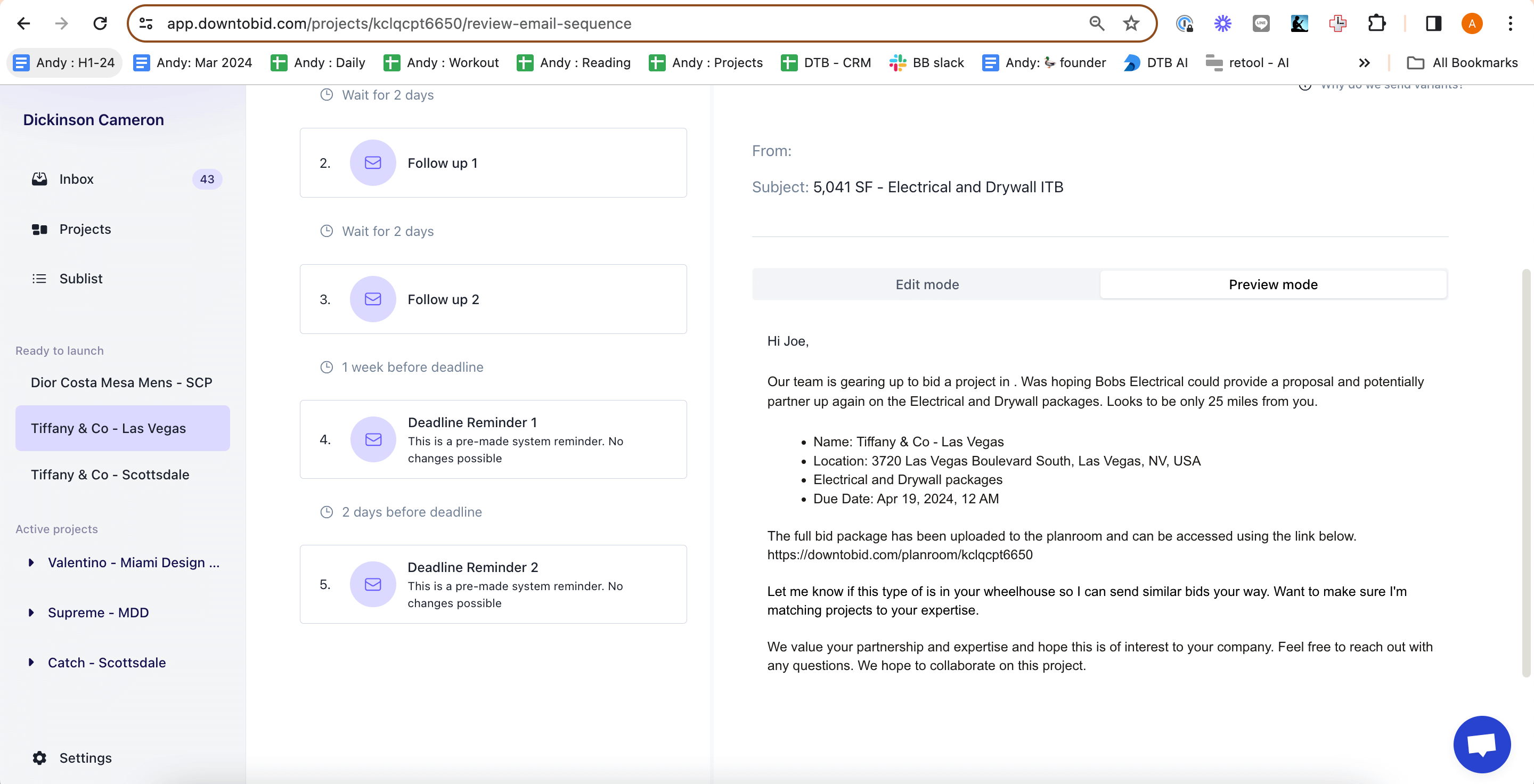
This AI-driven approach boosts bid participation, leads to high-quality bids, and builds lasting relationships with the right subs. Some of our recent results include:
- A 30% average increase in response rates from targeted subcontractors.
- Some users report over a 60% response rate and more than 80 bids for a single project.
Understanding Bidding Intent
Traditional bid platforms rely on basic Yes/No/Maybe buttons to track subcontractor interest. While these buttons promise quick feedback, they miss the complex reality of bidding decisions.
A simple “No” doesn’t explain whether a subcontractor hesitated due to tight timelines or uncertainty about project scope alignment. These binary buttons lack context, leaving you in the dark.
Downtobid fills this gap with a more nuanced, data-driven approach. Instead of static buttons, we send personalized, email-based ITBs that let subcontractors respond directly, creating smoother, more engaging bidding processes.
Our AI then categorizes responses such as:
- Not bidding
- Interested
- Actively bidding
With a clear, real-time picture of your bid coverage, you can shift your focus from tracking bid statuses to building strong, responsive relationships with your subs.
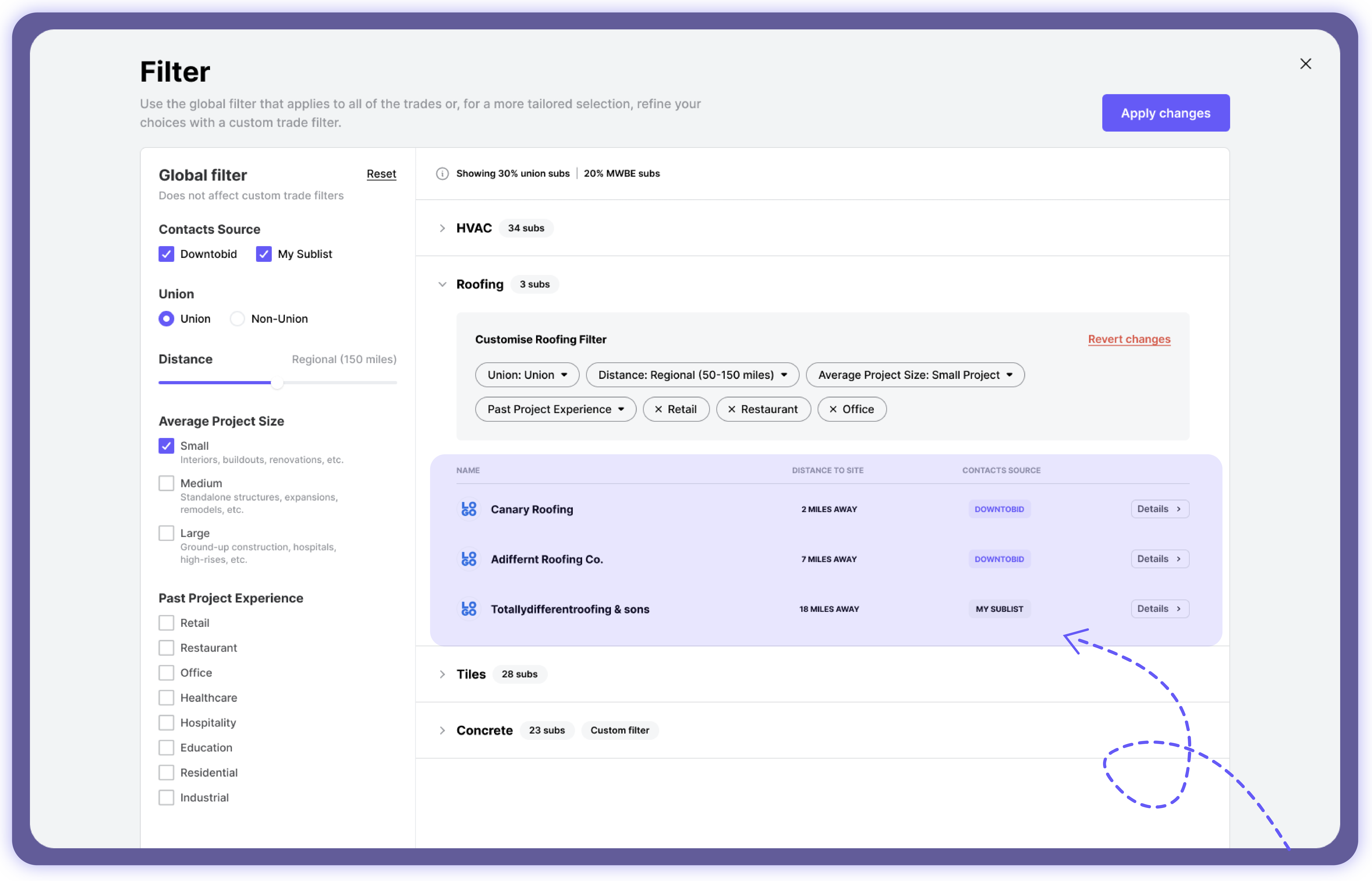
Providing Easy Access to Project Plans and Documents
One of the biggest hurdles for subcontractors is accessing the information they need to create accurate bids. A digital document management system helps, but it needs to do more than just store files. It should make the process easier for subcontractors by:
- Sharing one consolidated, well-organized document version, meaning subs don't have to sift through multiple files.
- Allowing easy access to project plans with no account required — provide a straightforward link for instant access.
- Focusing on essentials and skipping pre-qualification forms in the early stages so subs can concentrate on project details first.
AI checks all these boxes, and it’s clear when you see our planroom in action:
- AI-driven file syncing ensures everyone works with the latest version of documents.
- Automatic file grouping into four folders: Plans, Specs, Photos, and Miscellaneous. This makes it easy to find what’s needed.
- Smart indexing and numbering of pages allow subcontractors to locate specific documents quickly.
- Subcontractors access the planroom for free, no account or registration required.
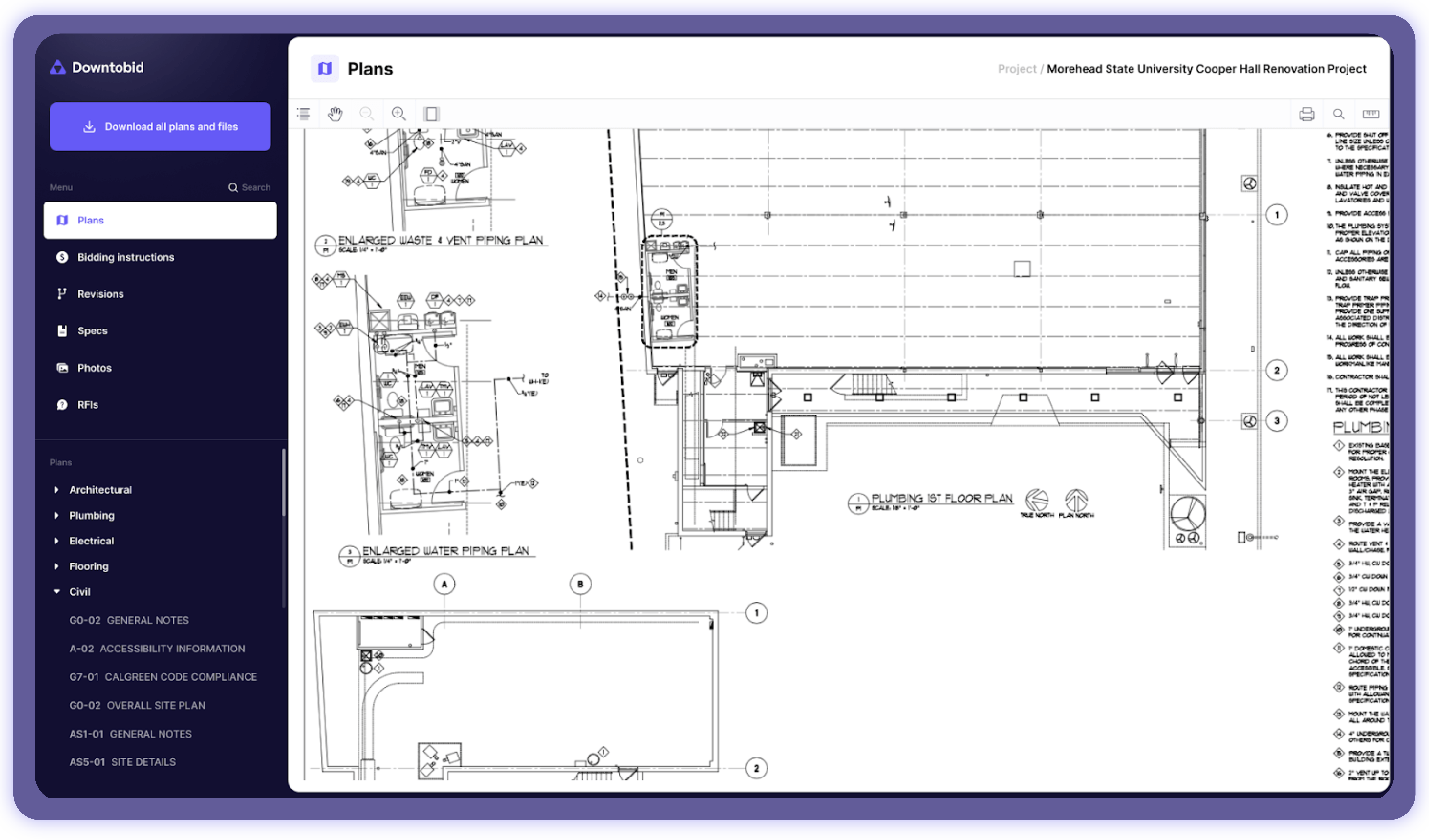
Beyond simply making plans accessible, our system also helps track subcontractor engagement:
- See who’s reviewing plans and how long they spend on them.
- Identify serious bidders early, based on their level of engagement.
- Refine outreach strategies with real-time insights.
This level of visibility helps you target the right subs, simplify bid evaluation, and maximize bid potential, all while making the experience smooth and straightforward for everyone involved.
Supercharge Your Bidding Process with Downtobid
While AI might organize data at lightning speed, it lacks the seasoned judgment that only years in field can develop. For instance:
- Balancing trade-offs between materials.
- Spotting subtle gaps or errors in project details.
- Making decisions that algorithms can’t contextualize.
These require human expertise, the kind that grows from hands-on experience and an intimate knowledge of the construction sector.
That’s why at Downtobid, we see AI as a powerful assistant, not a replacement. Our automation tools simplify the heavy lifting, allowing you to focus on the high-value work that plays to your unique expertise.
Curious to see how AI fits into your workflow? Try a free demo with Downtobid and experience firsthand how it complements your expertise for a smoother preconstruction process.